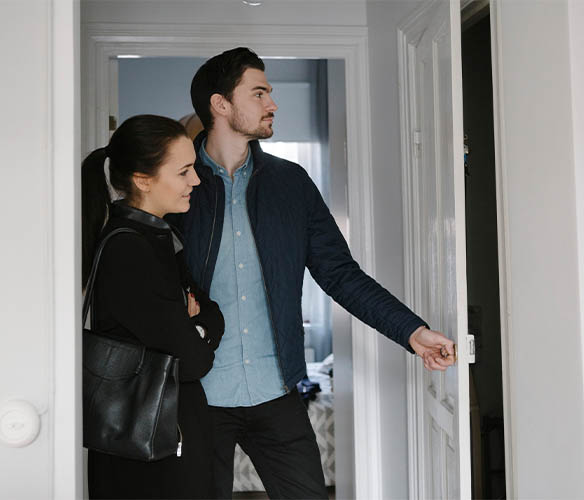- Home
- Guides
- Home ownership
- Home buying costs
Home buying costs

State and Federal Government costs
Property transfer stamp duty is a state government tax payable by the buyer and is calculated on the price paid for the property. Because it is a duty for transferring the title of a property, it will be imposed whether or not the purchase is financed with a mortgage. First home buyers may be eligible for significant rebates on stamp duty.
This is a state government charge to register the transfer of title of the property from one person to another. Some states and territories may charge a set fee, while others are on a sliding scale.
This is an administrative charge imposed by the Land Titles Office or equivalent in each state or territory. This fee is charged for entering (registering) the lender’s mortgage on to the title record for the property.
The fee differs from state to state, and ranges from around $115 to $181 per registration. The borrower pays this cost.
Loan application costs
To start the process of obtaining a loan, the borrower may have to pay an application or loan establishment fee. The cost can vary depending on loan type, lender, security and loan splits. In most cases, the fee includes the cost of the first valuation.
The cost of additional valuations ranges from $150 - $250. A few lenders may ask for an upfront payment to cover costs.
Your lender will most likely ask you to for a property valuation so they can be sure the value of the property is greater than the amount you are looking to borrow. They will generally require this be ordered through them, although some may allow you to use a third party. Either way, you will bear the cost and this could set you back around $300, but can go as high as $1,000 in some cases.
Your mortgage broker can help you work out the cost and requirements of property valuations for each lender.
Lender’s Mortgage Insurance (LMI) insures the lender against any loss incurred if the borrower defaults and the net proceeds of an enforced sale of the security property are insufficient to clear the debt. Note that Lender’s Mortgage Insurance covers the lender, not the borrower.
LMI may be added to your final home loan amount (depending on the lender.) It should not be confused with Mortgage Protection Insurance, which covers the mortgage repayment for the borrower in the event of death, disability, illness or involuntary unemployment etc.
Purchase costs
This is the fee charged by the conveyancer or solicitor to carry out the legal work involved in purchasing real estate. Be sure to ask about the costs of searches, settlements and disbursements.
Prudent home buyers will arrange for inspections of a prospective property by qualified inspectors before exchanging contracts. The inspections ensure that the property is not affected by insect infestations and that it is structurally sound and complies with building regulations.
The cost of inspections is payable by the property buyer. Note that lenders may make satisfactory inspections a condition of loan approval if doubts exist about the condition of the property.
Construction costs
Construction loans normally represent more work for the lender due to the way they are progressively funded during the construction period.
Some lenders will simply add an additional construction loan fee, while others will charge a progress payment fee each time the builder asks for a payment. On top of this, you may also be charged an inspection fee for a valuer to inspect the property to ensure the building is in the state the builder is claiming.
A normal construction would have four to five progress payments and two inspections.
Check your building contract carefully and, if possible, make sure it includes fixed site costs and connection of services. Many people assume site costs are included in the contract, but this is not always the case. Unexpected events, such as hitting rock or the need to build retaining walls, can add thousands to the site costs.
The same applies to the connection of services such as power, water, and phones. Many providers only allow for 5-10 metres for connection from the street to the house and will charge extra for distances which exceeds this. The standard service connection may be fine for a standard residential block but can be an unexpected cost for a large rural block.
Insurance costs
Home and contents insurance is a must-have that protects you financially if your home or belongings are damaged by fire, storm and in some cases, flood, or you experience loss through burglary.
Mortgage protection insurance can take care of part, or all, of your mortgage payments if you get injured, become too ill to work, or even die.
Income protection insurance pays up to 75% of your income if you are ill or injured and unable to work. The premiums are usually tax deductible, however tax is payable on benefit payments.
As a condition of loan settlement, lenders will impose a condition that all security properties are covered under a building insurance policy.
The amount of the policy coverage required will be the deemed full insurable value of the dwelling, which protects the borrower (and the lender’s interests) in the event that the dwelling is damaged by fire or some other catastrophe.
The insurance policy premium cost is paid by the borrower and the lender’s full name will be noted on the policy as mortgagee.
Building insurance is not required for strata-titled properties; in these instances, the lender will require evidence that the body corporate has taken a policy for the entire block.
In Queensland, insurance is required from 5.00pm on the day following the signing of the contract.

Find your local Mortgage Choice broker
Find a broker
This won't take long.
We see you have connected with one of our brokers before. Would you like to contact them again or be connected to a new broker?
Something's gone wrong on our end and we're trying to fix it. Please try submitting again in a few minutes.

A new broker from your local area will contact you.

A local Mortgage Choice broker will be in touch soon!
While you wait, feel free to explore some of our helpful tools:
